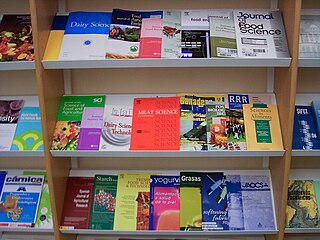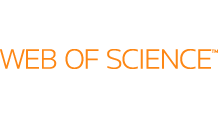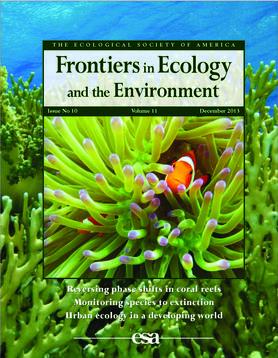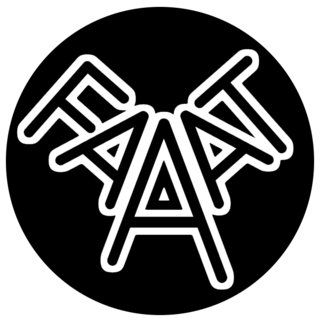
In academic publishing, a scientific journal is a periodical publication intended to further the progress of science, usually by sharing findings from research with readers. They are normally specialized based on discipline, with authors picking which one they send their manuscripts to.

An academic journal or scholarly journal is a periodical publication in which scholarship relating to a particular academic discipline is published. Academic journals serve as permanent and transparent forums for the presentation, scrutiny, and discussion of research. They nearly universally require peer review or other scrutiny from contemporaries competent and established in their respective fields. Content typically takes the form of articles presenting original research, review articles, or book reviews. The purpose of an academic journal, according to Henry Oldenburg, is to give researchers a venue to "impart their knowledge to one another, and contribute what they can to the Grand design of improving natural knowledge, and perfecting all Philosophical Arts, and Sciences."

Open access (OA) is a set of principles and a range of practices through which research outputs are distributed online, free of access charges or other barriers. Under some models of open access publishing, barriers to copying or reuse are also reduced or removed by applying an open license for copyright.
A citation index is a kind of bibliographic index, an index of citations between publications, allowing the user to easily establish which later documents cite which earlier documents. A form of citation index is first found in 12th-century Hebrew religious literature. Legal citation indexes are found in the 18th century and were made popular by citators such as Shepard's Citations (1873). In 1961, Eugene Garfield's Institute for Scientific Information (ISI) introduced the first citation index for papers published in academic journals, first the Science Citation Index (SCI), and later the Social Sciences Citation Index (SSCI) and the Arts and Humanities Citation Index (AHCI). American Chemical Society converted its printed Chemical Abstract Service into internet-accessible SciFinder in 2008. The first automated citation indexing was done by CiteSeer in 1997 and was patented. Other sources for such data include Google Scholar, Microsoft Academic, Elsevier's Scopus, and the National Institutes of Health's iCite.
Scopus is Elsevier's abstract and citation database launched in 2004. Scopus covers nearly 36,377 titles from approximately 11,678 publishers, of which 34,346 are peer-reviewed journals in top-level subject fields: life sciences, social sciences, physical sciences and health sciences. It covers three types of sources: book series, journals, and trade journals. All journals covered in the Scopus database are reviewed for sufficiently high quality each year according to four types of numerical quality measure for each title; those are h-Index, CiteScore, SJR and SNIP. Searches in Scopus also incorporate searches of patent database Lexis-Nexis, albeit with a limited functionality.
The impact factor (IF) or journal impact factor (JIF) of an academic journal is a scientometric index calculated by Clarivate that reflects the yearly mean number of citations of articles published in the last two years in a given journal, as indexed by Clarivate's Web of Science.

Google Scholar is a freely accessible web search engine that indexes the full text or metadata of scholarly literature across an array of publishing formats and disciplines. Released in beta in November 2004, the Google Scholar index includes peer-reviewed online academic journals and books, conference papers, theses and dissertations, preprints, abstracts, technical reports, and other scholarly literature, including court opinions and patents.

Geophysical Research Letters is a biweekly peer-reviewed scientific journal of geoscience published by the American Geophysical Union that was established in 1974. The editor-in-chief is Harihar Rajaram.
Journal Citation Reports (JCR) is an annual publication by Clarivate. It has been integrated with the Web of Science and is accessed from the Web of Science Core Collection. It provides information about academic journals in the natural and social sciences, including impact factors. The JCR was originally published as a part of the Science Citation Index. Currently, the JCR, as a distinct service, is based on citations compiled from the Science Citation Index Expanded and the Social Sciences Citation Index. As of the 2023 edition, journals from the Arts and Humanities Citation Index and the Emerging Sources Citation Index will also be included.

The Web of Science is a paid-access platform that provides access to multiple databases that provide reference and citation data from academic journals, conference proceedings, and other documents in various academic disciplines. It was originally produced by the Institute for Scientific Information. It is currently owned by Clarivate..

Review of General Psychology is the quarterly scientific journal of the American Psychological Association Division 1: The Society for General Psychology. The journal publishes cross-disciplinary psychological articles that are conceptual, theoretical, and methodological in nature. Other aspects include the evaluation and integration of research literature and the providing of historical analysis. The journal was established in 1997. The editor-in-chief is Wade E. Pickren and Thomas Teo.

Transportation is a peer-reviewed academic journal of research in transportation, published by Springer Science+Business Media. The journal focuses on issues of relevance to the formulation of policy, the preparation and evaluation of plans, and the day-to-day operations management of transport systems. It concerns itself with the policies and systems themselves, as well as with their impacts on and relationships with other aspects of the social, economic and physical environment. Its first issue was published in 1972.

Frontiers in Ecology and the Environment is a peer-reviewed scientific journal issued ten times per year, and consists of peer-reviewed, synthetic review articles on all aspects of ecology, the environment, and related disciplines, as well as short, high-impact research communications of broad interdisciplinary appeal. Additional features include editorials, commentaries, a letters section, Life Lines, job ads, and special columns. It is published by Wiley-Blackwell on behalf of the Ecological Society of America (ESA). According to the Journal Citation Reports, the journal has a 2021 impact factor of 13.780, ranking it eleventh out of 279 journals in the category "Environmental Sciences" and fourth out of 174 journals in the category "Ecology".
Metascience is the use of scientific methodology to study science itself. Metascience seeks to increase the quality of scientific research while reducing inefficiency. It is also known as "research on research" and "the science of science", as it uses research methods to study how research is done and find where improvements can be made. Metascience concerns itself with all fields of research and has been described as "a bird's eye view of science". In the words of John Ioannidis, "Science is the best thing that has happened to human beings ... but we can do it better."
Transportation Research Part D: Transport and Environment is a peer-reviewed, international scientific journal which publishes work relating to land, sea, and air transportation systems and their impact on environmental systems. It was established in 1996 and is published by Elsevier. The editors-in-chief are Robert Noland and Jason Cao.

Juan de Dios Ortúzar is Emeritus Professor at the Pontifical Catholic University of Chile, Santiago, Chile. He specializes in discrete choice models, valuation of externalities, design and collection of mobility and preference surveys and transportation forecasting. He received a B.Sc. in mathematics and a civil engineering degree at PUC, and an M.Sc. and Ph.D. from the University of Leeds.

For Alternative Approaches to Addiction, Think & do tank is an international non-profit organization working on drug policy, created in 2015 and based in Paris, France.
Vibrational Spectroscopy is a bi-monthly peer-reviewed scientific journal covering all aspects of Raman spectroscopy, infrared spectroscopy and near infrared spectroscopy. Publication began in December 1990 under the original editors Jeanette G. Grasselli and John van der Maas. The current editor-in-chief is Keith C. Gordon. In addition to research articles and communications, review articles are also published in the journal.
Transportation Research Part E: Logistics and Transportation Review is a bimonthly peer-reviewed academic journal which publishes information and articles about logistics and transportation research. It was established in 1997 and is published by Elsevier. The editors-in-chief are Tsan-Ming Choi and Hans Wang. It is ranked as a top journal in the Australian ABDC business school journal list (A*). According to the Journal Citation Reports, the journal has a 2021 impact factor of 10.047.










